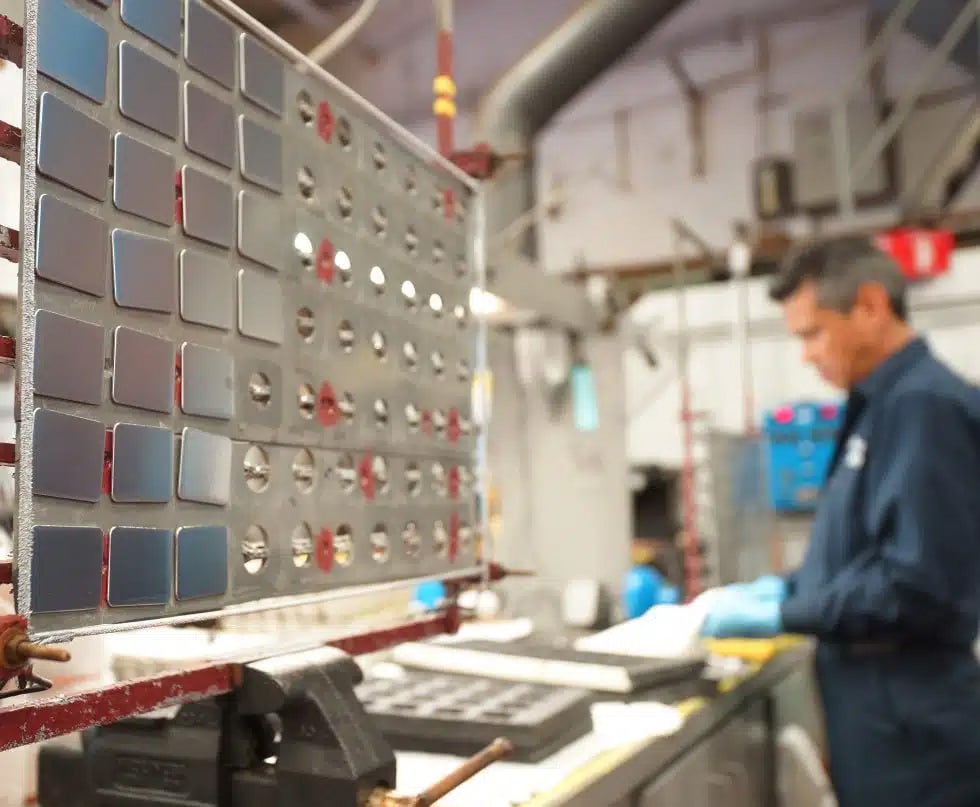
No metal finishing work matters more than the application of advanced coatings to medical instruments and devices. In some instances, lives are—quite literally—at stake. If a coating is too thick and impedes the functioning of an instrument, the outcome of a procedure can be affected. If a coating flakes off and contaminates the procedure site, serious problems can result.
Consequently, it is imperative to choose the right metal finisher to work with, and making the right selection requires using the right selection criteria.
Unfortunately, too often cost is at the top of the priority list. It is not uncommon for a medical instrument designer, manufacturer, or end user to assess the entire field of coatings companies and populate their “shortlist” of potential providers exclusively with those at the lower end or bottom of the cost spectrum. In the process, they are immediately dismissing many highly qualified providers.
This is understandable, of course. It is natural to look for a cost-effective solution, particularly when the person or group making the decision may have to defend it to their superiors. However, in many instances, there is a significant difference between a cost-effective solution and a truly effective one. When it comes to patient safety and positive outcomes, it is the latter that is most important.
No one could reasonably argue that cost should not be a factor at all when evaluating metal finishers. But it must be one of several considerations and it has to be properly prioritized on that list of criteria.

engineers looking over blueprints
How to Find the Ideal Metal Coatings Partner
When selecting a business partner of any kind, companies that make uninformed decisions are taking a significant risk. In the case of a medical instrument coatings partner, organizations that choose a provider without carefully considering their own needs and the provider’s capabilities are making a particularly large gamble.
On the other hand, a company that defines and prioritizes its selection criteria before starting its research is much more likely to find the right provider and minimize the risk of problems down the road.
While every medical instrument designer, manufacturer, and user has unique needs, the seven assessment criteria below—prioritized appropriately for a given situation—can help your organization identify the ideal partner.
Finished product quality.
In healthcare, high quality leads to the best outcomes. If a provider doesn’t deliver consistently excellent work, the fact that they rank well in other areas is simply not important.
Industry-specific expertise.
Having experience in applying coatings to certain types of metal items does not automatically mean that a coatings company can effectively apply coatings to all types of metal items. Providers must understand the goals, challenges, and solutions specific to medical instruments. For example, some instruments are used more frequently than others, and consequently cleaned and sterilized more often. That fact has a bearing on the type and thickness of the coating that must be used.
Cost
Rarely is a purchasing decision made totally free of budget considerations. But, as noted above, cost should be considered in light of other factors. Most importantly, choosing a “low-cost but low-quality” provider typically is not a strategy that works out well.
Track record
A coatings company should be able to provide data on things like acceptance rates to prove that they do good work and meet the needs of their customers.
Communication
A provider should be able to demonstrate that they are proactive in how they communicate with customers and highly responsive should any questions or concerns arise during a project. If a provider has a reputation for going “radio silent” for any period during projects, that is not a good sign. It may indicate that they are overwhelmed with work or that they do not place a high value on communication. Either way, it is not good for the companies that use their services.
Collaboration
The most effective relationships between coatings providers and the companies that design, make, or use medical instruments are collaborative relationships. The sharing of ideas and insights is the best way to achieve positive results.
Flexibility
There are many scenarios where coatings may be needed. Common examples include one-off prototyping to production runs to urgent “fixes” for items coated by another company. The ability to help with any of those scenarios is important.
Vetting Metal Finishers: Being Methodical Makes a Difference
While thoroughly vetting metal finishers for medical instruments is critically important, it does not have to be difficult. When the key characteristics are assessed systematically, and cost is viewed with the proper perspective, companies can make a well-informed decision that leads to a lasting, mutually beneficial partnership.